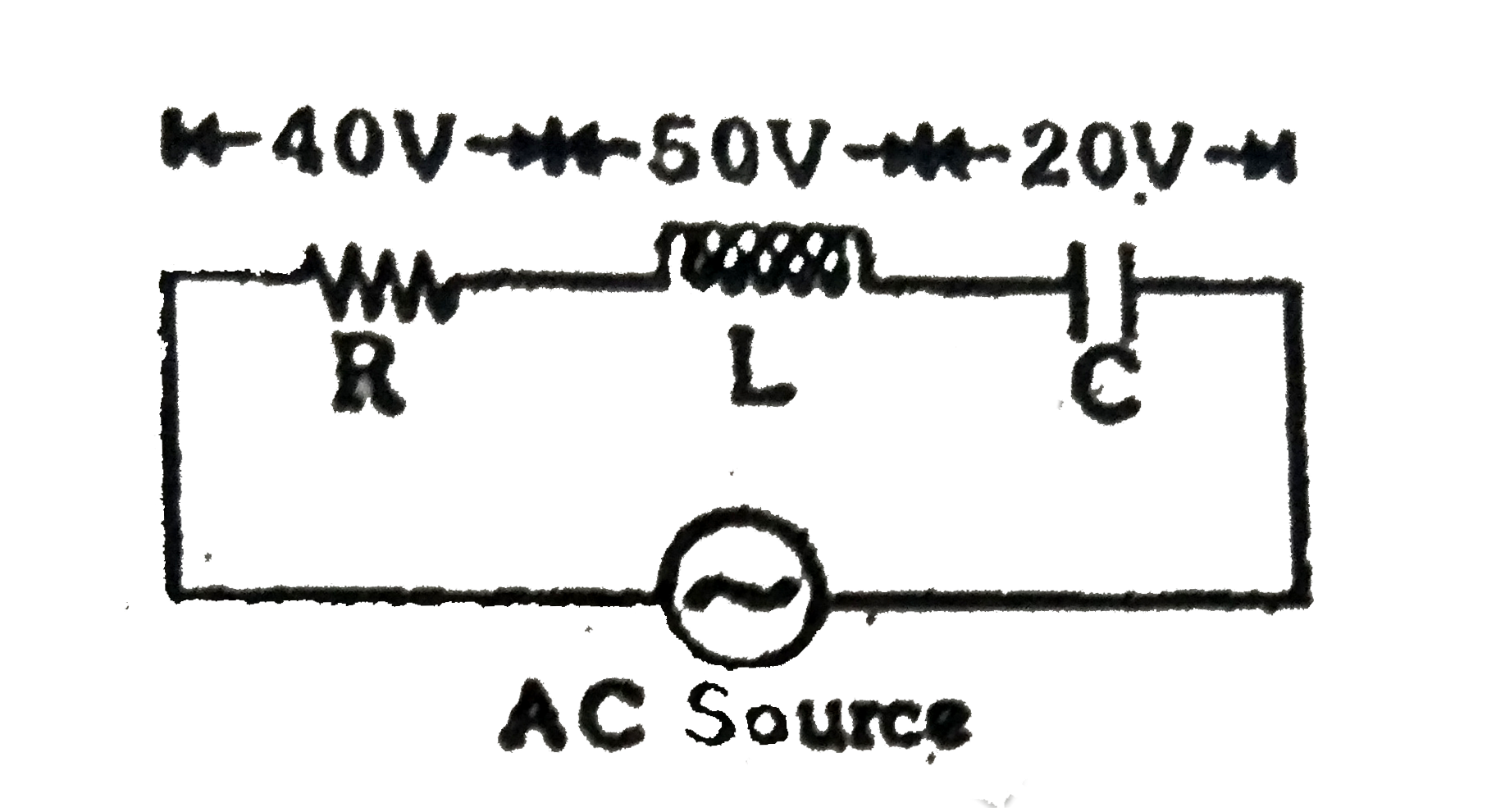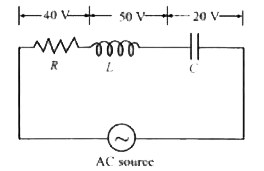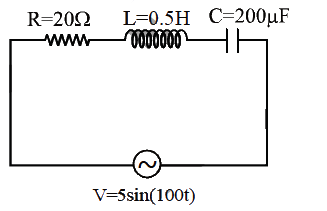For a series R-L-C circuit :-
(a) Voltage across L and C are differ by π
(b) Current through L and R are in same phase
(c) Voltage across R and L differ by π/2
(d) Voltage across L and current through C are differ by π/2
a,b,c
b,c,d
c,d,a
ALL
The correct Answer is:D
To solve the problem regarding the phase relationships in a series R-L-C circuit, let's analyze each of the given options step by step.
Step 1: Understanding the Phase Relationships
In a series R-L-C circuit:
- The current (I) is the same through all components (R, L, and C).
- The voltage across the resistor (V_R) is in phase with the current.
- The voltage across the inductor (V_L) leads the current by π/2 (90 degrees).
- The voltage across the capacitor (V_C) lags the current by π/2 (90 degrees).
Step 2: Analyzing Each Option
Now, let's analyze each of the options provided in the question:
Option (a): Voltage across L and C differ by π
- The voltage across the inductor (V_L) leads the current by π/2, and the voltage across the capacitor (V_C) lags the current by π/2.
- Therefore, the phase difference between V_L and V_C is π (180 degrees).
- Conclusion: This statement is correct.
Option (b): Current through L and R are in the same phase
- Since the circuit is in series, the current through the inductor (I_L) and the current through the resistor (I_R) are the same.
- Conclusion: This statement is correct.
Option (c): Voltage across R and L differ by π/2
- The voltage across the resistor (V_R) is in phase with the current, while the voltage across the inductor (V_L) leads the current by π/2.
- Therefore, the phase difference between V_R and V_L is π/2.
- Conclusion: This statement is correct.
Option (d): Voltage across L and current through C differ by π/2
- The voltage across the inductor (V_L) leads the current by π/2, while the current through the capacitor (I_C) lags the voltage across the capacitor (V_C) by π/2.
- Since V_L leads the current and I_C lags the voltage, the phase difference between V_L and I_C is indeed π/2.
- Conclusion: This statement is correct.
Final Conclusion
All four options are correct. Therefore, the answer is that all statements (a, b, c, d) are true.
In a series R-L-C circuit:
- The current (I) is the same through all components (R, L, and C).
- The voltage across the resistor (V_R) is in phase with the current.
- The voltage across the inductor (V_L) leads the current by π/2 (90 degrees).
- The voltage across the capacitor (V_C) lags the current by π/2 (90 degrees).
Now, let's analyze each of the options provided in the question:
- The voltage across the inductor (V_L) leads the current by π/2, and the voltage across the capacitor (V_C) lags the current by π/2.
- Therefore, the phase difference between V_L and V_C is π (180 degrees).
- Conclusion: This statement is correct.
- Since the circuit is in series, the current through the inductor (I_L) and the current through the resistor (I_R) are the same.
- Conclusion: This statement is correct.
- The voltage across the resistor (V_R) is in phase with the current, while the voltage across the inductor (V_L) leads the current by π/2.
- Therefore, the phase difference between V_R and V_L is π/2.
- Conclusion: This statement is correct.
- The voltage across the inductor (V_L) leads the current by π/2, while the current through the capacitor (I_C) lags the voltage across the capacitor (V_C) by π/2.
- Since V_L leads the current and I_C lags the voltage, the phase difference between V_L and I_C is indeed π/2.
- Conclusion: This statement is correct.
All four options are correct. Therefore, the answer is that all statements (a, b, c, d) are true.
Similar Questions
Knowledge Check
- Question 1 - Select One
In series LCR circuit, the voltages across R, L and C are shown in the figure. The voltage of applied source
 A110 VB10 voltC50 voltD70 volt
A110 VB10 voltC50 voltD70 volt - Question 2 - Select One
In series LCR circuit, the voltages across R, L and C shown in figure. The voltage of applied source is
 A110 voltB10 voltC50 voltD70 volt
A110 voltB10 voltC50 voltD70 volt - Question 3 - Select One
Phase difference between voltages across L and C in series is
A0∘B90∘C180∘D360∘
In an LCR series circuit the voltages across R,L and C at resonance are 40Vand60V respectively the applied voltage is .
View SolutionConsider following series R-L-C circuit.

The maximum voltage drop across inductance is :-View SolutionFor a series RLC circuit R=XL=2XC. The impedance of the current and phase different (between) V and i will be
View SolutionIn an LCR series circuit the rms voltages across R,L and C are foundd to be 10V,10V and 20V respectively. The rms voltage across the entire combination is
View SolutionIn series LCR circuit, the phase difference between voltage across L and voltage across C is
View Solution


